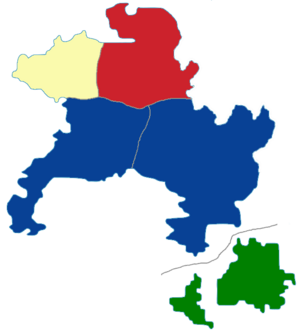Akashian general election, 1982
| |||||||||||||||||||||||||||||||||||||||||||||||||||||||||||||||||||||||||||||||||||||
400 seats in the National Assembly 201 seats needed for a majority | |||||||||||||||||||||||||||||||||||||||||||||||||||||||||||||||||||||||||||||||||||||
|---|---|---|---|---|---|---|---|---|---|---|---|---|---|---|---|---|---|---|---|---|---|---|---|---|---|---|---|---|---|---|---|---|---|---|---|---|---|---|---|---|---|---|---|---|---|---|---|---|---|---|---|---|---|---|---|---|---|---|---|---|---|---|---|---|---|---|---|---|---|---|---|---|---|---|---|---|---|---|---|---|---|---|---|---|---|
| Turnout | 92,0% | ||||||||||||||||||||||||||||||||||||||||||||||||||||||||||||||||||||||||||||||||||||
| |||||||||||||||||||||||||||||||||||||||||||||||||||||||||||||||||||||||||||||||||||||
 Most voted party by province | |||||||||||||||||||||||||||||||||||||||||||||||||||||||||||||||||||||||||||||||||||||
| |||||||||||||||||||||||||||||||||||||||||||||||||||||||||||||||||||||||||||||||||||||
A general election was held in Akashi on 26 June 1982. The interim Þiudawulþus government passed a sweeping electoral reform beforehand, which doubled the size of the National Assembly, instituted a 3% electoral threshold, and restricted independents to running in constituencies.
Major changes had occurred during the troubled 12th Assembly. The most significant was the "kibi-yuru war" within the Conservative National Party, ending with the victory of the "soft" faction led by Ran Tsukuda in 1981. Ran launched a transformation of the CNP, purging hardliners and repositioning it as a centre-right party — in effect, moving it from the dark blue bloc to the light blue bloc. Her efforts to change the party's image extended to recruiting sanyoi candidates.
Ran became the main attraction of the election, as her promises of careful governance, economic revival, and constitutional renewal appealed to a public fed up with economic stagnation and political gridlock. The Socialist Party's campaign was weakened by its association with the "siege economy"; new leader Kagehisa Ueki's attempts to moderate its platform and express remorse for the "mistakes" of the 1970s brought the hostility of the Communist Party.
Results
| General election, 26 June 1982 | |||||||||
|---|---|---|---|---|---|---|---|---|---|

| |||||||||
| Party | Party list | Constituency | Total seats |
+/- | |||||
| PR | % | +/− | STV | % | +/− | ||||
| Conservative National Party | 865.200 | 15,0% | +6,0% | 1.260.445 | 21,9% | +13,9% | 86 | +65 | |
| Socialist Party | 669.088 | 11,6% | +1,1% | 690.655 | 12,0% | ±0,0% | 71 | +50 | |
| National Cooperative Party | 519.120 | 9,0% | -1,2% | 587.057 | 10,2% | -0,6% | 28 | +10 | |
| Communist Party | 484.512 | 8,4% | -1,6% | 575.546 | 10,0% | -1,5% | 32 | +11 | |
| Green Party | 472.976 | 8,2% | -0,5% | 402.882 | 7,0% | -0,5% | 31 | +12 | |
| Liberal Party | 444.136 | 7,7% | -0,3% | 379.860 | 6,6% | -1,3% | 27 | +12 | |
| National Democratic Party | 432.600 | 7,5% | -0,9% | 362.594 | 6,3% | -1,4% | 25 | +9 | |
| United Akashi | 415.296 | 7,2% | -0,6% | 351.083 | 6,1% | -2,1% | 23 | +7 | |
| Reform Party | 403.760 | 7,0% | -0,2% | 345.327 | 6,0% | -2,4% | 22 | +6 | |
| National Union | 288.400 | 5,0% | -1,9% | 155.397 | 2,7% | -2,1% | 17 | +3 | |
| Justice Party | 213.416 | 3,7% | +1,0% | 143.886 | 2,5% | +0,2% | 12 | +6 | |
| Social Credit Party | 201.880 | 3,5% | +0,3% | 103.598 | 1,8% | +0,4% | 7 | +4 | |
| Freedom League | 184.576 | 3,2% | +0,8% | 120.865 | 2,1% | +0,1% | 8 | +5 | |
| Akashi Renewal Party | 173.040 | 3,0% | +1,0% | 115.109 | 2,0% | +0,5% | 7 | +4 | |
| Independents | N/A | 161.153 | 2,8% | -0,6% | 4 | -2 | |||
| Total | 5.767.997 | 100% | — | 5.755.458 | 100% | — | 400 | — | |
| Registered voters and turnout | 6.269.562 | 92,0% | — | 6.269.562 | 91,8% | ||||
| Bloc strength | ||
|---|---|---|
| Bloc | Parties | Seats |
| Crimson bloc | CP, SCP, GP | 70 |
| Pale crimson bloc | SP, NU, JP | 100 |
| Light yellow bloc | NCP | 28 |
| Light blue bloc | LP, NDP, RP, UA, CNP | 183 |
| Dark blue bloc | ARP, FL | 15 |
- Government: Conservative National Party–National Democratic Party–Reform Party–United Akashi–Liberal Party coalition.
The CNP won a plurality of votes and seats, the first centre-right party to do so since the Akashian Civil War. The SP finished second, with a deficit of only 15 seats. Nine other parties won between 12 and 32 seats, leading to speculation that the electoral reform was producing a two-party system.
The increased size of the National Assembly allowed every party to register gains, while the independents lost 2 seats. The CNP managed to finish first in the two most populous provinces, Kagi and Matō, but were overtaken by the LP in Takao, a somewhat surprising result given Ran's progressive conservatism and image were uniquely suited to Takao's tradition of paternalistic conservatism.
The light blue bloc became the largest, narrowly overtaking the crimson–pale crimson alignment. The defection of the CNP devastated the dark blue bloc, which saw its seats cut in half.
Ran formed a light blue coalition and secured outside support from the National Cooperative Party, whose new leadership was more amenable to working with the centre-right. This gave the government a small majority of 10 seats.
Although her government proved popular and effective, it was troubled by private tensions over cabinet posts, with crucial CNP allies taking significant ministries to the annoyance of the smaller parties. The NDP, RP, UA, and LP, who had slogged through years in opposition during the 1970s, were rankled by the CNP's quick transformation and it gaining a disproportionate electoral reward in comparison.


